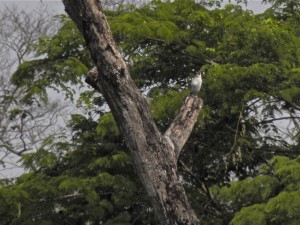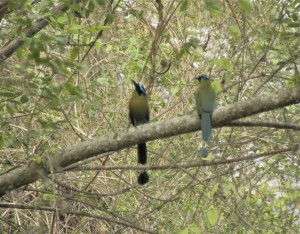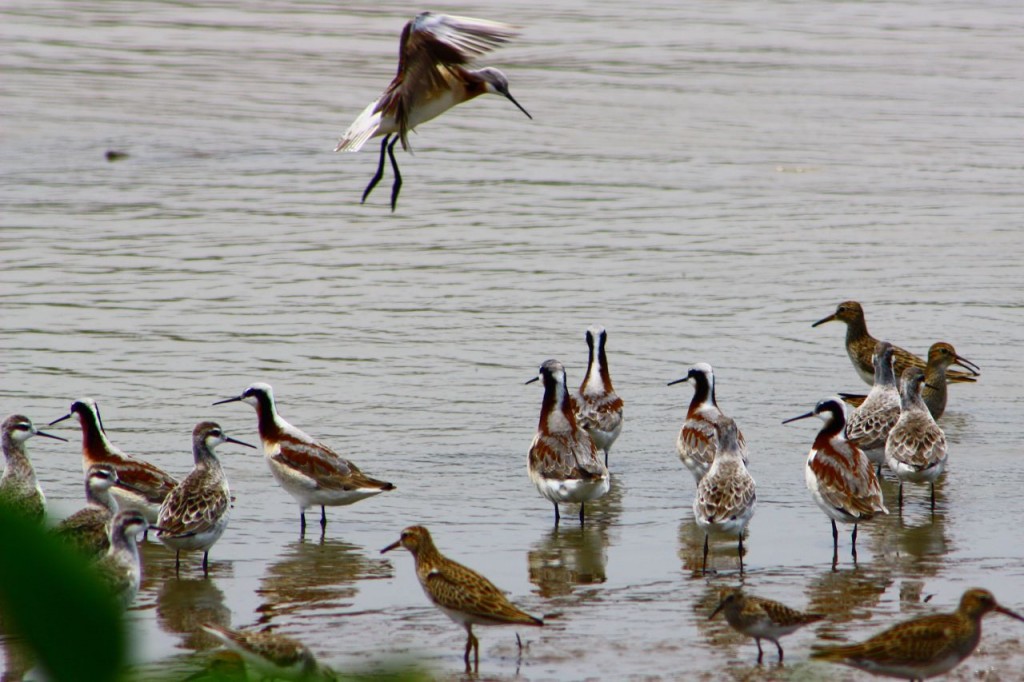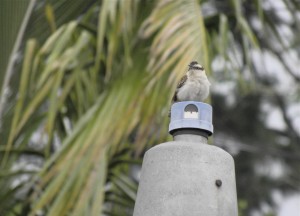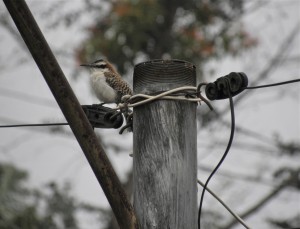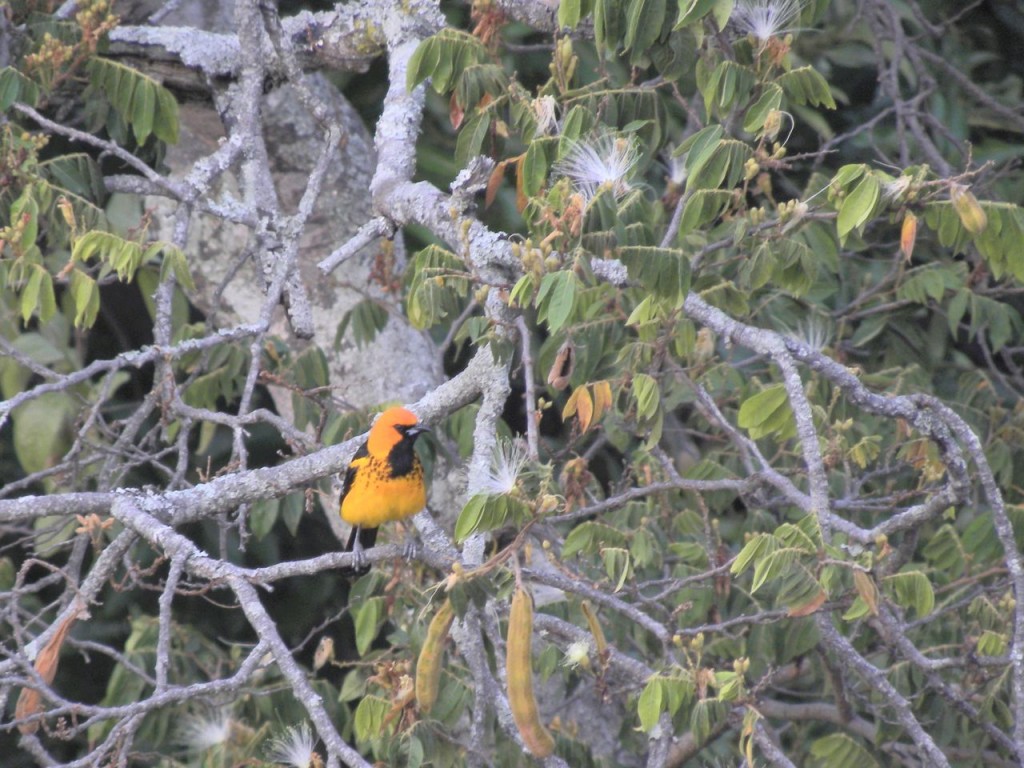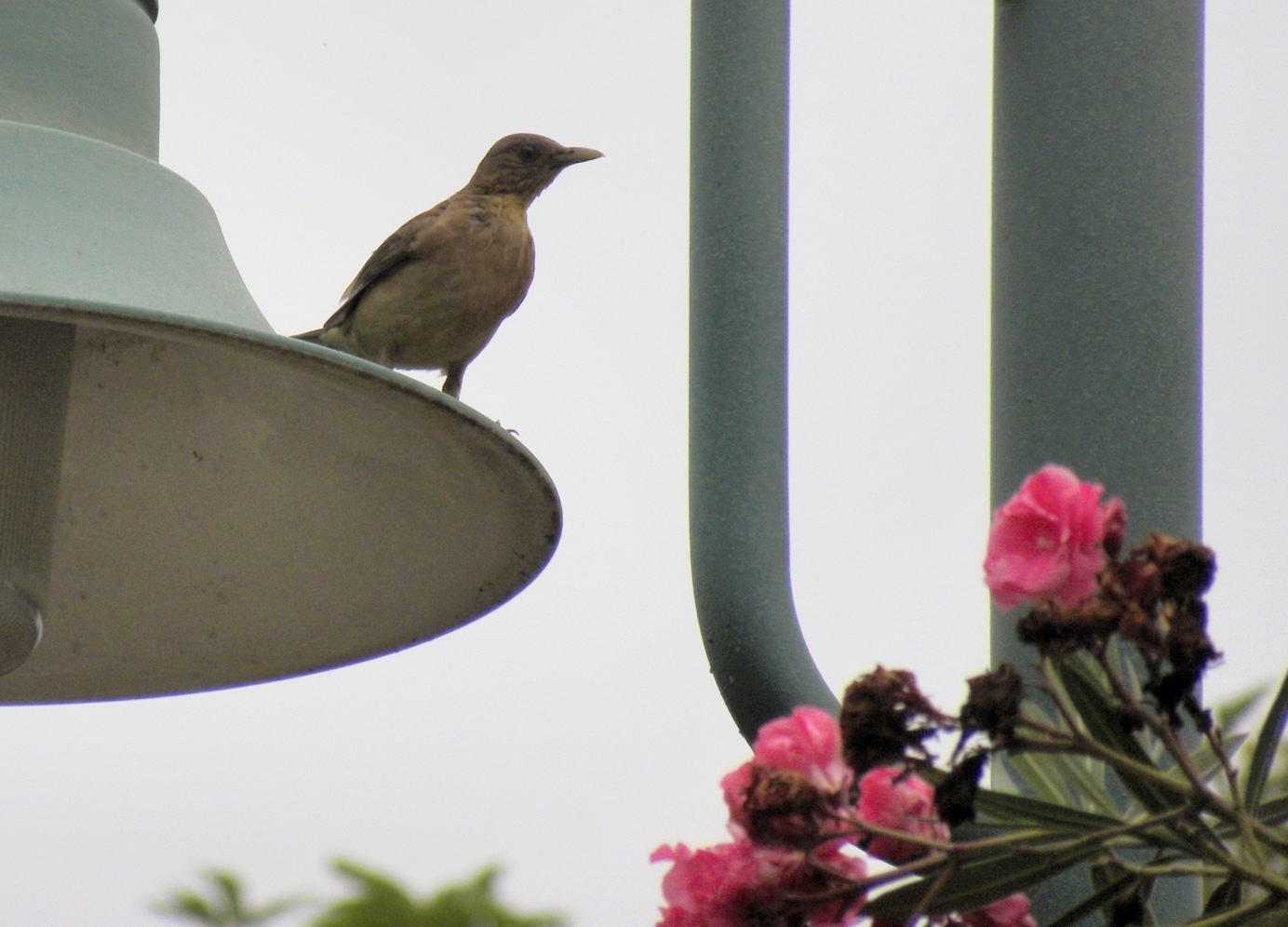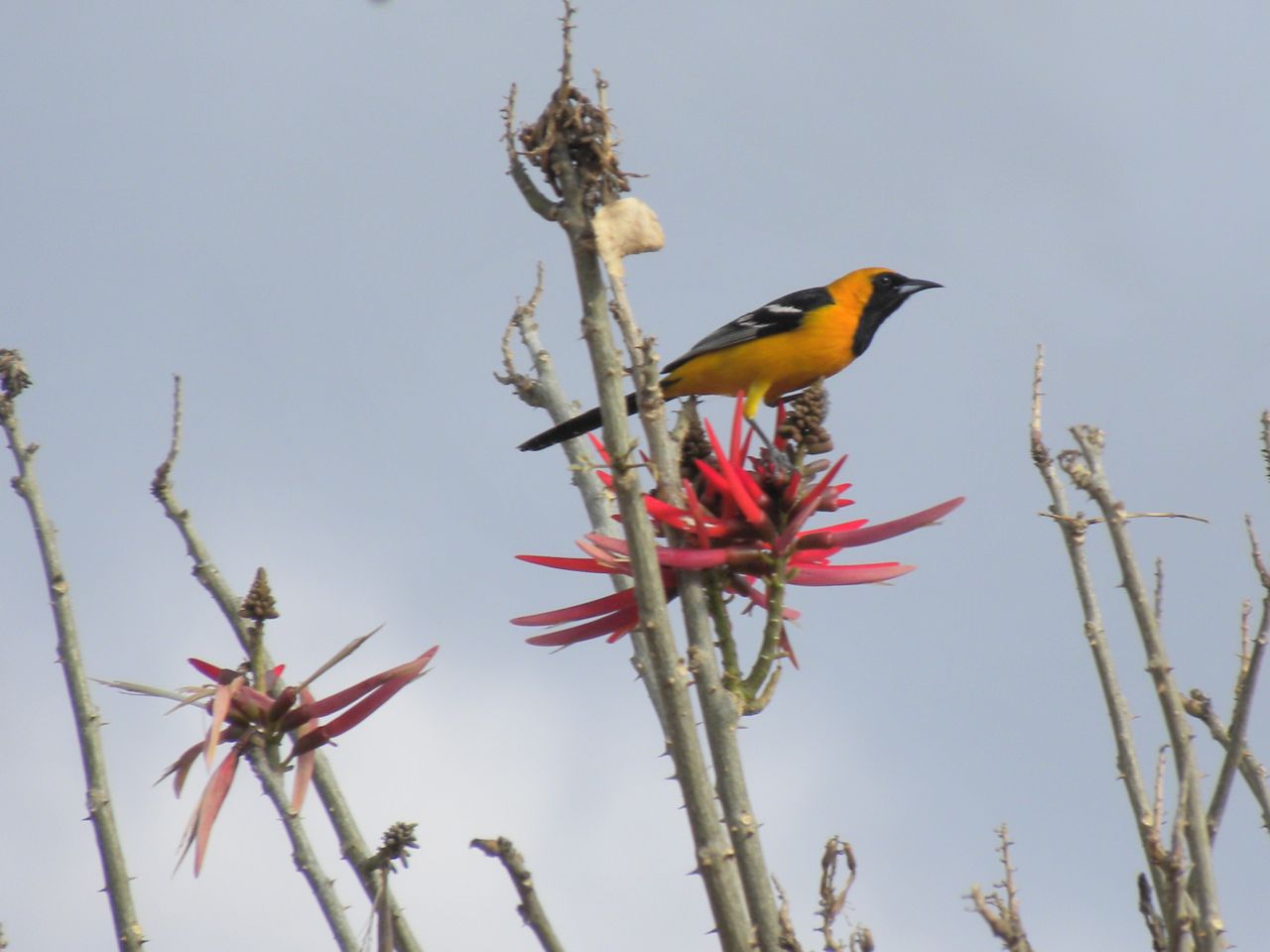May 4 2013 Ilopango El Salvador. As guests of Rotary Clubs in San Salvador our group is very well cared for. The wheelchair distribution work is done and it’s nearly time to leave; but first to reward us with some down time our hosts took us to what they modestly call the club by the lake. Without dwelling on it needlessly I’ll just say it’s where the wealthy elite relax and find an escape from the grit and gridlock of San Salvador. It’s noteworthy that to drive to the club you have no choice but to pass through a small community typical of any Salvadorian village, except that it’s controlled and managed by a very violent and antisocial gang; the police, the government and law & order have no presence or right to be there!
The club is a hedonist’s paradise, manicured lawns and shady forest groves were alive with birds, mostly Clay-coloured Thrushes and Great-tailed Grackles. Breaking away from my hammock-lounging, lemonade-sipping team-mates I went looking for birds. The list was fairly short: a Rufous-naped Wren, an army of American Coots, some Spot-breasted Orioles, Golden-fronted Woodpecker, a Berylline Hummingbird and, Bird of the Day, a young Northern Jacana strolling across the grass by the beach.
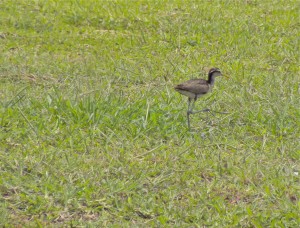
Jacana’s are a fairly common wading bird of hot climes wherever there’s aquatic vegetation and open wet weedy areas. Northern Jacana adults have a rich dark cinnamon brown back turning to almost black up the neck and head and terminating in a bright yellow headlight. Also known as Lily Walkers, jacanas seem to pick their way fastidiously on stilt-like legs, sampling the way ahead with exaggeratedly long matchstick toes.
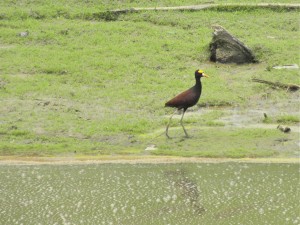
I first encountered jacanas in my earlier trip to Suchitoto but they were all adults, today’s bird, enjoying the club’s facilities and hospitality, was a juvenile. Still the same high-stepping stick legs and concert pianist’s fingers but in light plumage more like an avocet.
